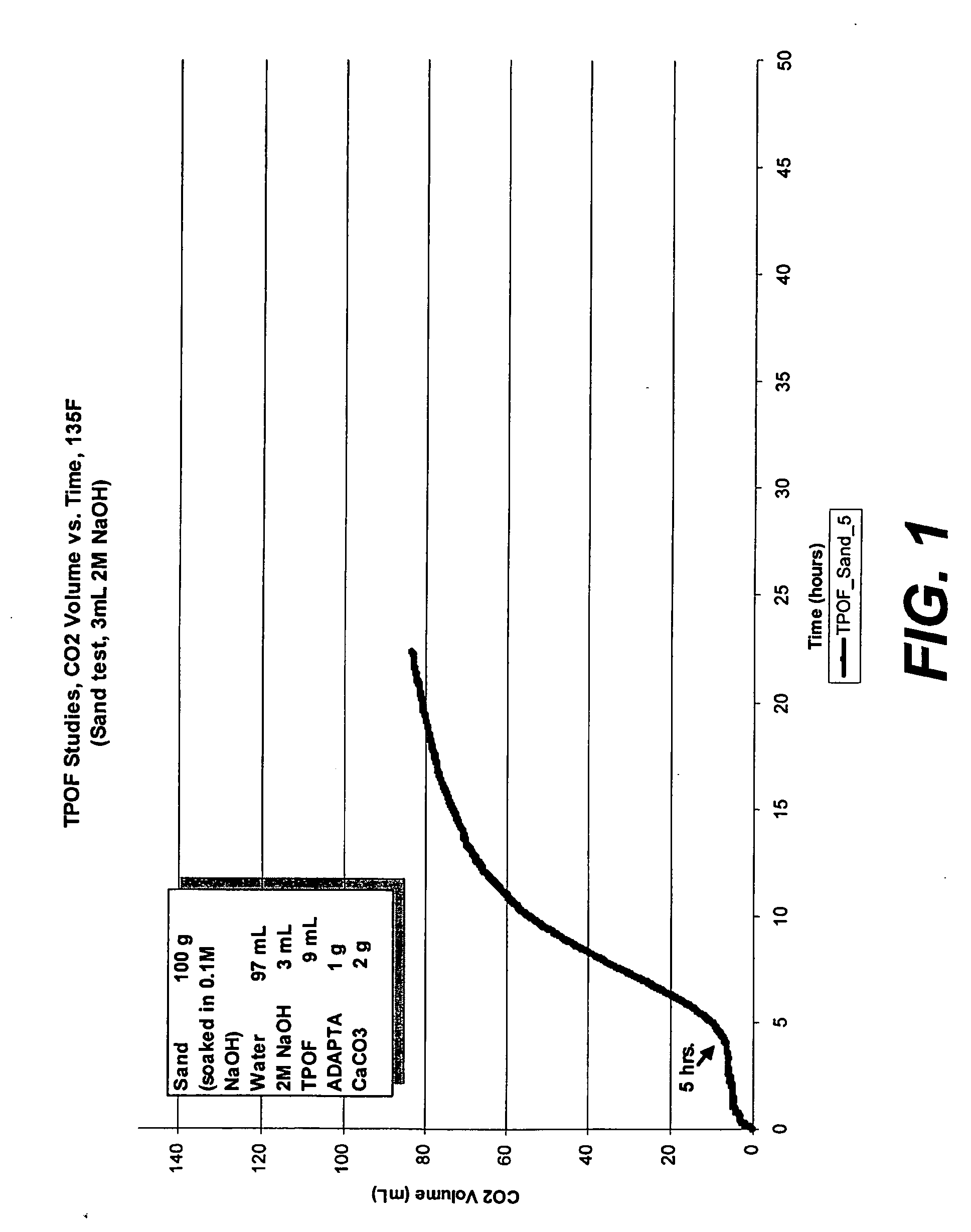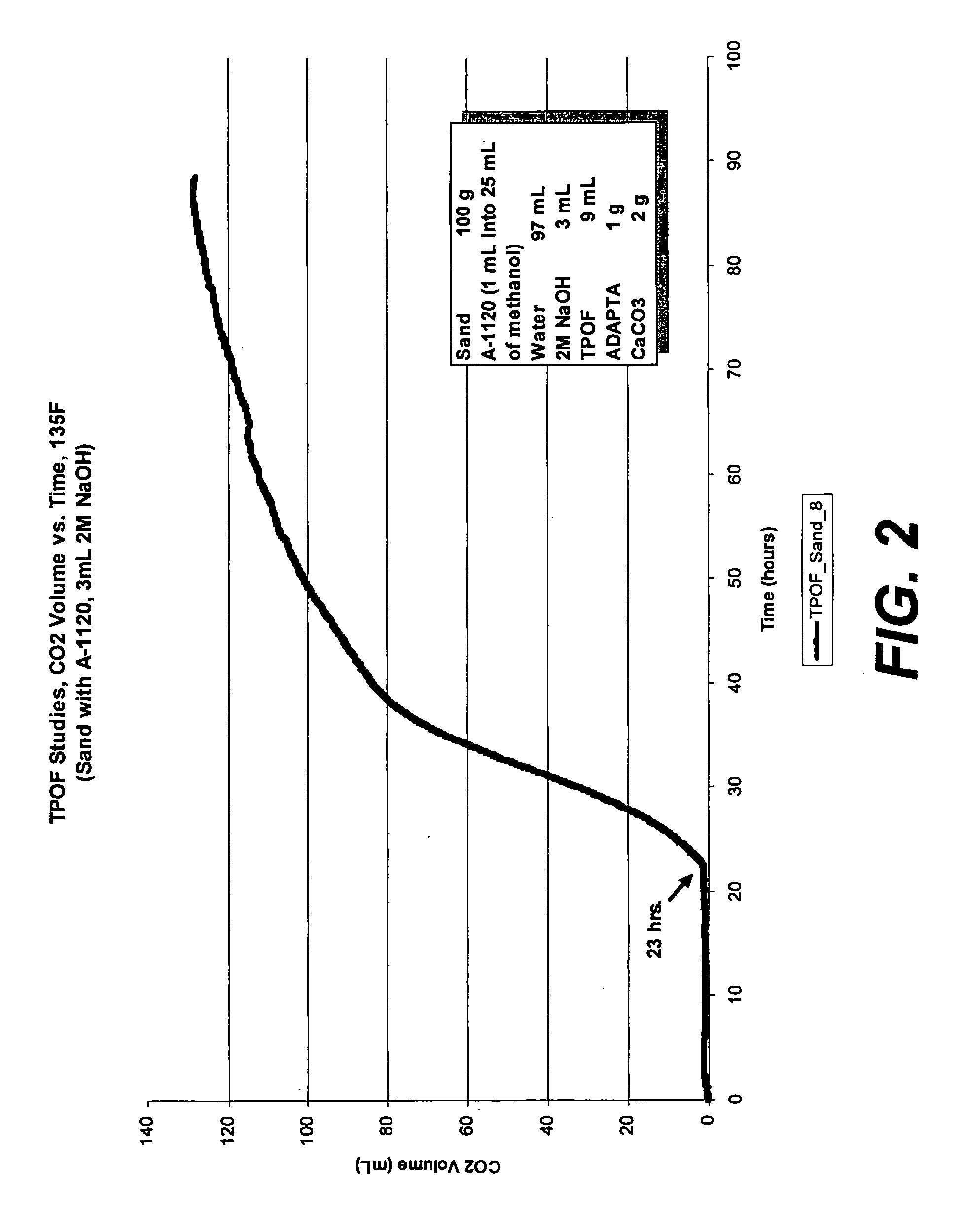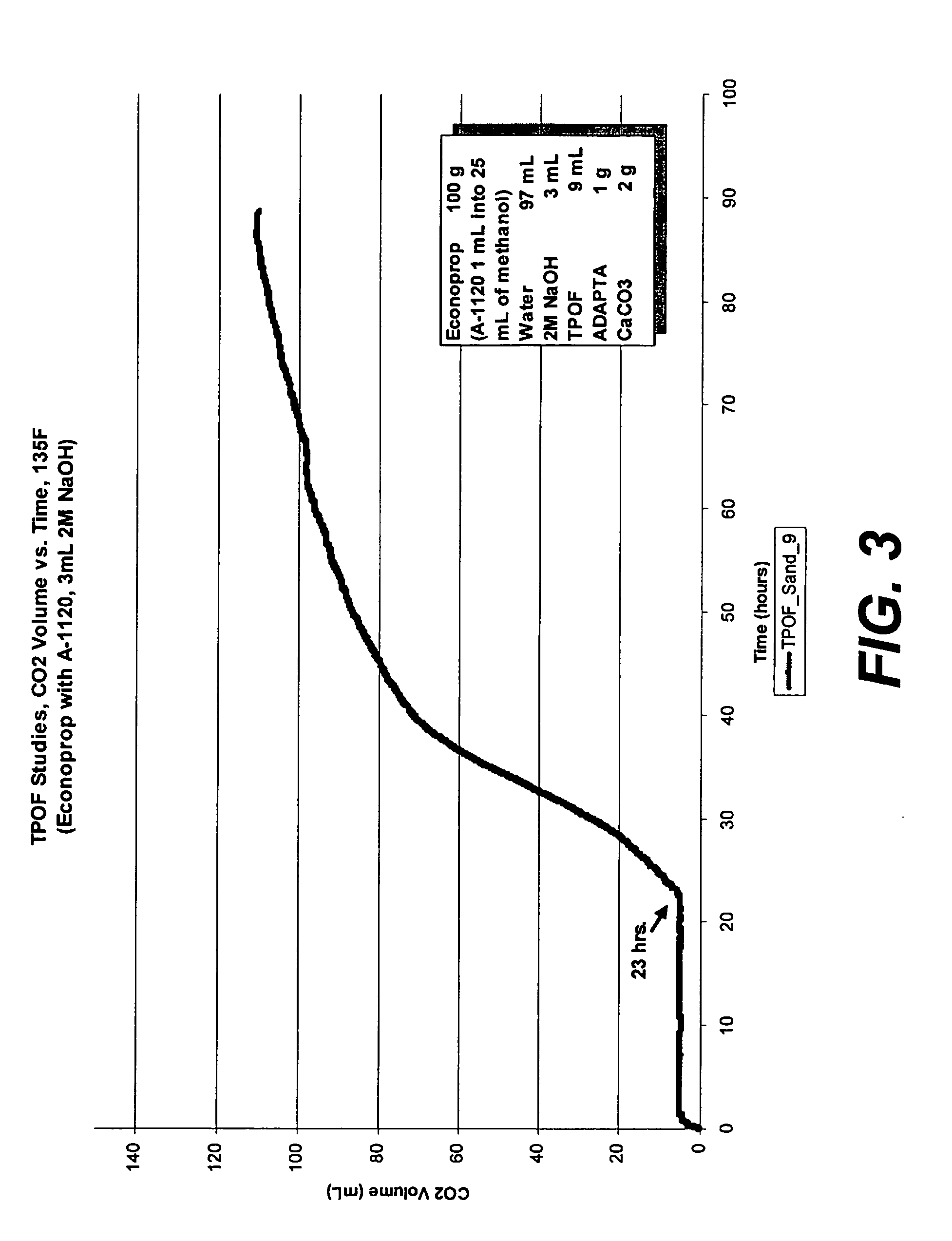Methods of modifying particulate surfaces to affect acidic sites thereon
- Summary
- Abstract
- Description
- Claims
- Application Information
AI Technical Summary
Benefits of technology
Problems solved by technology
Method used
Image
Examples
examples
[0036] Three exemplary methods were tested of affecting the acidic sites on sand and synthetic proppants. In the first method, sand was soaked in 0.1M NaOH overnight. The NaOH was poured off the sand and then the sand was mixed with CaCO3. Tripropyl orthoformate (“TPOF”) was then mixed with ADAPTA HP available from Halliburton Energy Services, at various locations (methyl styrene acrylate copolymer) until a thick gel formed. The TPOF mixture was stirred into the sand-CaCO3 mixture until evenly dispersed. The sand was transferred to the bottom of an Erlenmyer flask, and then 97 ml of water and 3 ml 2M NaOH (as an inhibitor) was poured on top. The flask was sealed and placed in a 135° F. water bath. The flask was then monitored for CO2 production because CO2 production is believed to be indicative of the start of catalyzed acid production. FIG. 1, which is a graph that plots CO2 Volume (ml) over time at 135° F., illustrates about a 5 hour delay using additional NaOH as an inhibitor.
[...
PUM
 Login to View More
Login to View More Abstract
Description
Claims
Application Information
 Login to View More
Login to View More - R&D
- Intellectual Property
- Life Sciences
- Materials
- Tech Scout
- Unparalleled Data Quality
- Higher Quality Content
- 60% Fewer Hallucinations
Browse by: Latest US Patents, China's latest patents, Technical Efficacy Thesaurus, Application Domain, Technology Topic, Popular Technical Reports.
© 2025 PatSnap. All rights reserved.Legal|Privacy policy|Modern Slavery Act Transparency Statement|Sitemap|About US| Contact US: help@patsnap.com



